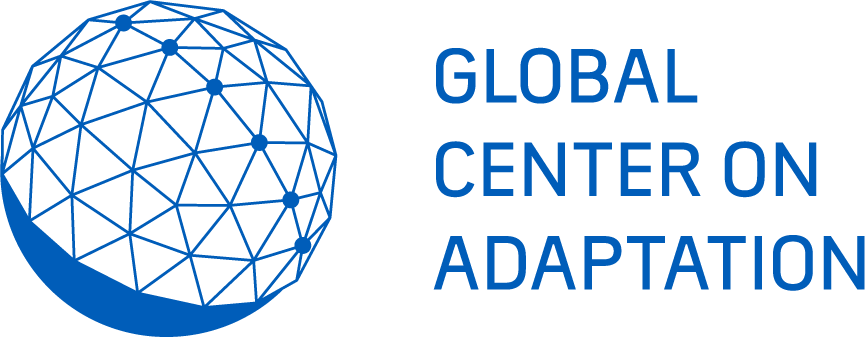Climate Risks and Adaptation Activities
Energy sector resilience is crucial to ensure undisrupted service for critical infrastructure and services and to minimize climate impacts to vulnerable communities. As countries strive to meet rapidly increasing energy demand while shifting towards increasing the share of low-carbon sources, especially hydropower generation, this further exposes them to climate risks. Energy sector bottlenecks and power shortages are already costing African countries around 2-4% of GDP annually, costs which are likely to be exacerbated due to climate change. Climate impacts in the energy sector are most prominent in the hydropower sector, which currently accounts for around 42% of electricity generation on average across the continent and exceeds 80% in 11 countries (Burundi, Central African Republic, Djibouti, DR Congo, Ethiopia, Lesotho, Malawi, Mozambique, Namibia, Uganda, Zambia). Climate risks to hydropower include increased variability of streamflow, fluctuating basin water levels, and increased evaporation rates. These impacts will be spread unevenly across the continent. Expected loss of hydropower revenues range will range between 5-60% and increase consumer expenditure for energy by up to three times in dry scenarios.
Adaptation activities in the energy sector include climate-proofing power generation and transmission and distribution (T&D) assets, improving resilience of hydropower generation, and increasing access to reliable and affordable energy. Hard infrastructure measures can be complemented by soft measures such as identifying potential cascading risks in advance, establishing emergency protocols, integrating and prioritizing resilience into regional and national energy plans. Beyond strengthening national energy capacity, regional coordination through river basin organizations, power pools, and development banks should be enhanced to collectively manage shared water resources and power pools, as well as foster cross-border trade of energy. Meanwhile, increasing urban and rural access to clean, affordable, and reliable energy holds immense potential to decrease the exposure and vulnerability of communities and others living in energy poverty.
Context of Broader Investment
Energy sector commitments in Africa amounted to USD 43.8 billion in 2018, 67% higher than the 2015-2017 average and reaching the highest level of commitments ever recorded in the sector. This is on par with estimated investment needs by the Program for Infrastructure Development (PIDA), which called for USD 42.2 billion annually to 2040 to meet forecasted demand. However, the level of energy commitments and progress on electrification has been uneven across regions.
West Africa received the largest share of energy commitments at USD 14.13 billion (34% of the total) and has the highest energy access rate at 52% in Sub-Saharan Africa (excluding South Africa). South Africa and North Africa were the next largest recipients at USD 7.9 billion and USD 7.7 billion respectively, with electrification rates of 86% and 100%. Southern Africa (excluding South Africa) received USD 4.62 billion, East Africa USD 3.4 billion, and Central Africa USD 3.5 billion, each with electrification rates of 31%, 39%, and 25% respectively. Total private financing across the continent was USD 11.8 billion, with the majority going to energy and ICT sectors. USD 7.7 billion, or 65% of total private financing was destined for South Africa, including 21 new renewable energy projects, accounting for the majority of finance received by the country.
Achieving universal energy access, while cost-effectively meeting the increasing energy demand of a growing population and doing so with clean energy are the main challenges and key priorities faced by decision makers in the energy sector. With electricity demand in Africa expected to triple by 2040, many countries have turned to developing their untapped hydropower potential. Current installed hydropower capacity across the continent remains at around 37 GW, representing only around 11% of Africa’s full capacity. The low utilization rate may be explained by several factors, such as the land-intensive and site-specific nature of hydropower plants, a high-level of geological and hydrological risks that must be shared across public and private stakeholders, and significant project risks during the construction phase. These factors are amplified in lower-income countries, making it even less attractive for private investors. The only large privately financed project in Africa has been the Bujagali plant in Uganda, whereas the majority of hydropower plants have been publicly financed often with the support of concessional finance and long maturities.
By 2030, hydropower and wind capacity in Africa could reach 100 GW each. Over 50 hydropower projects currently under construction are expected to add only 15GW of installed capacity by 2025, suggesting significant room for scaling up. Additional investments will be critical to account for increasing climate impacts and aging infrastructure, two of the main drivers contributing to low-capacity factors. For instance, installed capacity in hydropower increased at an annual rate of 4.4% over the past decade, whereas generation only increased at an annual rate of 2.4%.
Approximately USD 250 million in adaptation finance tracked to the energy sector in Africa on average annually across 2017-18 from multilateral DFIs (95%) and international government ODA (5%). Finance to the sector was overwhelmingly in the form of low-cost project debt (91%) while the remainder was in the form of grant funding (9%).


